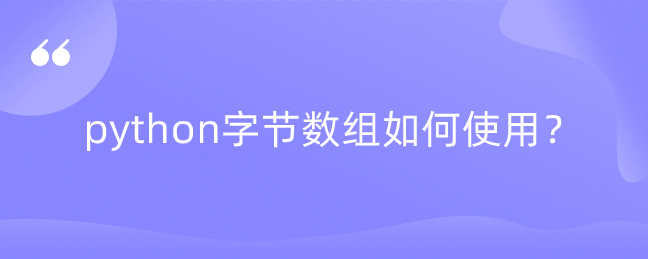
1、bytes和bytearray的要素都是在0-255之间的整数,但任何字符串都可以通过字符编码方案存储。字节数组切片或相应的字节数组;字节组可以直接显示ASCII字符。
s = 'helloèçí'
b_arr = bytes(s, 'utf_8')
print(type(b_arr))
print(type(b_arr))
for b in b_arr:
print(b, end=' ')
print()
print('element of bytes is int number', b_arr[0])
print('splice of bytes is bytes',end = ' ' )
b_arr_splice = b_arr[:1]
print(b_arr_splice)
num_b_arr = bytes([299])2、struct模块提供了将打包的字节序列转换节序列转换成由不同类型字段组成的元组,也有一些函数用于反向转换,将元组转换成打包的字节序列。该模块可以处理bytes,bytearray和memoryview对象。
import struct
record_format = 'hd4s'
pack_bytes = struct.pack(record_format, 7 , 3.14,b'gbye')
print(type(pack_bytes))
print(pack_bytes)
with open('struct.b', 'wb') as fp:
fp.write(pack_bytes)
record_size = struct.calcsize(record_format)
with open('struct.b', 'rb') as fp:
record_bs = fp.read(record_size)
print(struct.unpack(record_format, record_bs))以上就是python字节数组的使用,希望对大家有所帮助。更多Python学习指路:python基础教程
本文教程操作环境:windows7系统、Python 3.9.1,DELL G3电脑。






